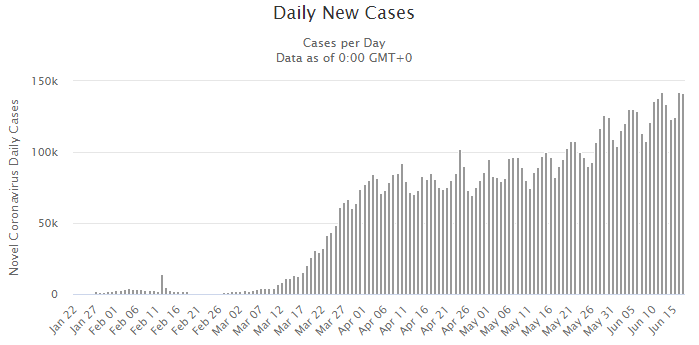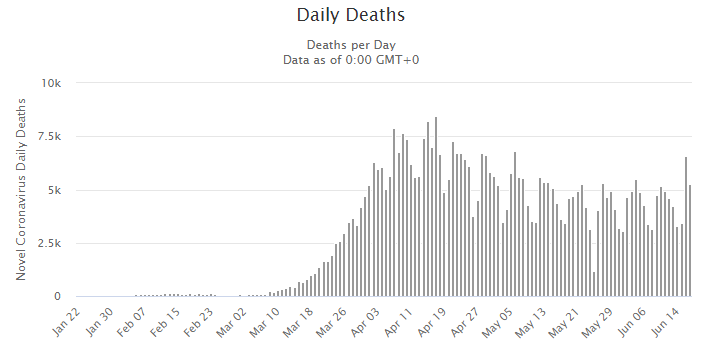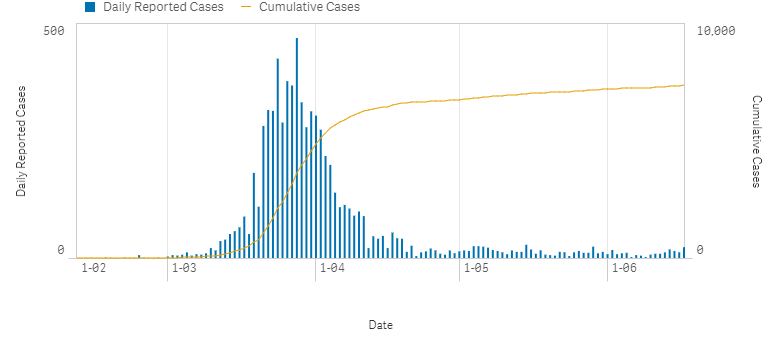- Fears that a new wave of COVID-19 infections is on the way are mounting as Beijing battles a resurgence of the virus
- However, global infections have continued to steadily increase since January — suggesting that the world is not actually through the first wave
- Nevertheless, while infections are rising, deaths are falling
- With an improved understanding of the virus and streamlined testing, healthcare systems are better equipped to deal with new infections now than they were before
- Australia has largely beaten the virus, but remains susceptible to the ominous second wave
- Even if this should occur, it’s likely the damage to the economy and to individual health will pale in comparison to the initial outbreak
After a fresh outbreak of COVID-19 infections in Beijing this week, it would seem fears of a second wave of coronavirus infections are all but confirmed.
The Chinese capital has introduced severe lockdown and restriction measures and cancelled thousands of flights since the virus started to spread through the city of 21 million people.
The city recorded 137 new cases between June 11 and June 17; the worst resurgence of the disease since February. It’s believed the new cases originated from the city’s Xinfadi wholesale food market, but the exact cause is unknown.
Regardless of how it started, however, one thing is clear: the coronavirus is not finished its business just yet.
Is a second wave imminent?
It would be pertinent at this point to examine why ‘second waves’ of diseases and virus infections occur.
Generally speaking, there are two main reasons a second wave could occur: either the virus mutates and makes those who have already been infected susceptible once more, or the population becomes complacent before the virus is truly eradicated and lets its guard down, prompting a fresh round of infections.
So, with whispers of a second wave getting louder, does the COVID-19 crisis as we know it meet these conditions?
In reality, no.
As far as we understand, the virus has not yet mutated and taken on a new form. Of course, given we have no vaccine or herd immunity, a mutated form of the virus would not pose much more of a threat than the SARS-CoV-2 strain that has already gripped the world.
This means the most likely way for a second wave to arise is through population complacency and prematurely-lifted restrictions.
However, here are the number of global daily infections of the virus since January:

Across the world, infections have averaged between 100,000 and 140,000 new daily cases all throughout June.
As such, a global second wave seems unlikely at this stage because we are not yet through the first wave. Infection rates have steadily risen since January and while news of fresh outbreaks is stirring fear and panic, the reality is the first wave of the virus has not yet been contained.
It’s also important to look at the daily deaths from the coronavirus over the same time period:

From the two graphs, we can see daily deaths in April were much higher on average than in May and June, despite more daily infections. This suggests that though infections are still on the rise, countries have become better at managing and treating them, even as lockdown restrictions ease and economies reopen.
What about Australia?
Of course, Australia’s charts paint a very different picture.

Australia has been seeing less than 20 new daily infections for almost all of June. What’s more, the majority of these are from travellers returning from overseas who are immediately quarantined.
While this means we are tackling the virus exceptionally well, it also means we are more susceptible to a second wave of infections.
Yet, with streamlined testing and a lower burden on healthcare facilities — proven by the falling death rate — a second wave will likely only cause a fraction of the damage the first one did.
On the economic side of things, a second lockdown is unlikely given our improved understanding of the virus and the sheer cost of the first lockdown. While it’s likely borders will remain closed for some time yet, the Australian economy is set to continue its gradual return to normality.
As for stock markets, its similarly unlikely a second wave will cause as dramatic a crash as the first. While the argument can certainly be made that the stock market recovery has outpaced economic recovery — meaning stocks are overvalued — U.S. infections stayed consistent despite the country’s lockdown measures.
This means the U.S. government will likely avoid another lockdown and companies will be able to get back to business as usual. Given the influence U.S. markets have on global stock exchanges, this is good news for investors.
Finally, Australians are more aware of the severity of the coronavirus on an individual scale than we were earlier in the year. Naysayers have largely been silenced by the toll the virus has taken on the world, and so individual vigilance will stay strong for quite some time.
Is a second wave of COVID-19 across Australia possible? Absolutely. But even if we do see a local resurgence of infections, we’re better equipped to handle it this time around.








